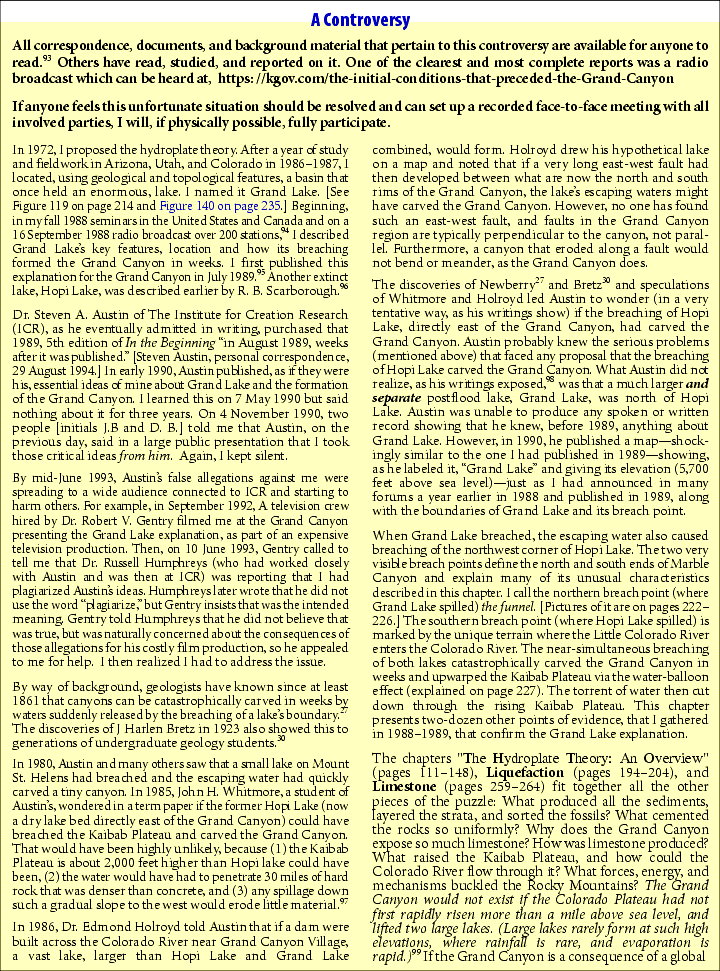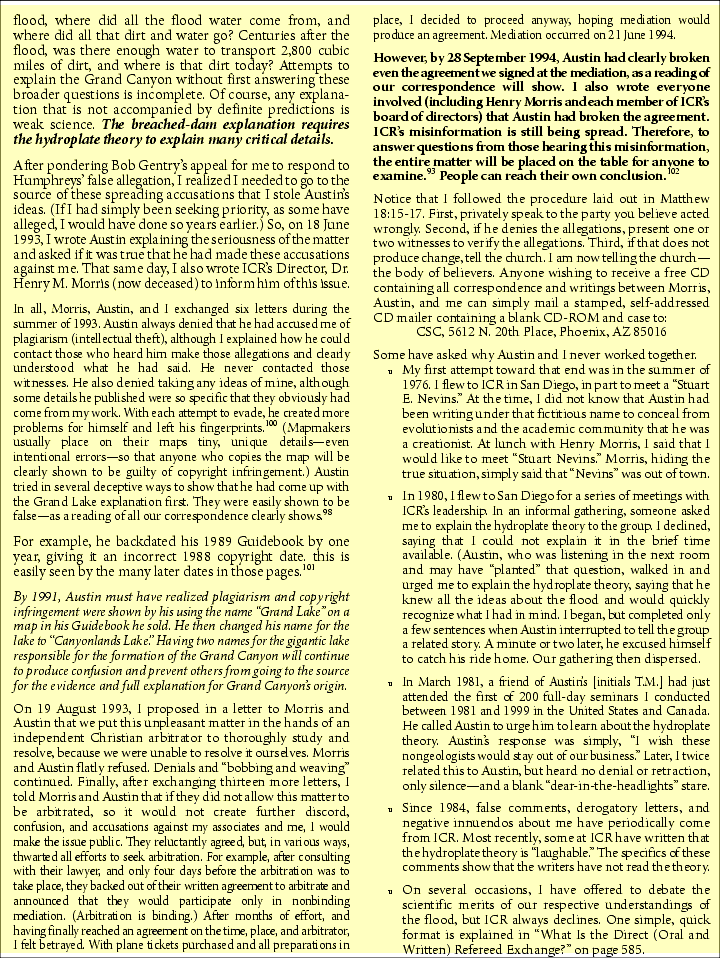 Other. Today, the Colorado River, would have to flow 2,400 feet uphill if it were to flow into the basin that once held Hopi Lake.
Other. Today, the Colorado River, would have to flow 2,400 feet uphill if it were to flow into the basin that once held Hopi Lake. Other. The Colorado River, with its heavy sediment load, could not have flowed into the basin that held Hopi Lake for long without filling it completely with sediments.
Other. The Colorado River, with its heavy sediment load, could not have flowed into the basin that held Hopi Lake for long without filling it completely with sediments.
Final Thoughts
Probably more geology has been exposed and studied in the Grand Canyon than in any other place on Earth. Therefore, the Grand Canyon is an excellent laboratory for testing the methods and explanations geologists have taught for the last century. What is the verdict?
In words that few geologists would dispute, the Grand Canyon is a “hazy mystery, cloaked in intrigue, and filled with enigmatic puzzles.” 3 Despite a century of concentrated effort by so many, their methods have produced recognized contradictions, and they have left much evidence completely unexplained. [See, for example, item 531 on page 242.]
What’s wrong?
a. As explained on page 197, evolutionary geology has been built upon two faulty assumptions: uniformitarianism and superposition.
b. The global flood has been rejected out of hand as a possibility.
c. Most geologists show little concern that they do not understand the forces, energy, and mechanisms that produced movements on and inside the Earth. Examples include continental drift, other plate movements, the production and release of magma, faulting, earthquakes, and the movements described in Endnote 22 on page 252.


It should be no surprise that the unexcelled Grand Canyon and the water that was in those two huge, high-elevation, postflood lakes are related to the most famous petrified forest and best-known mesa, butte, and spire region in the world—Monument Valley. Conversely, if mesas, buttes, and spires were formed over millions of years by meandering streams—the “textbook” explanation—then mesas, buttes, and spires should be more evenly distributed worldwide, not concentrated in this one basin on the Colorado Plateau.
Tourists gaze at and geologists attempt to describe these magnificent, massive, and startling features, as well as the Goosenecks, petrified forests, slot canyons, Zion and Bryce National Parks, other canyons in the region, huge sand dunes and hundreds of mounds and “pits.” How did they form? Also, archaeologists have wondered for a century why the people who lived in the Nankoweap Basin suddenly left. Seldom understood are how all these features are related; the stupendous forces, energy, and mechanisms involved; and the event behind it all. Part II of this book describes that event.
Historians of science have frequently noted that once a persistent enigma is resolved, seemingly unrelated mysteries are also resolved. Science then takes a giant step forward in what is called a paradigm shift, but the changed thinking doesn’t happen overnight. It takes scientists and laymen (1) willing to reexamine old explanations in light of the new perspective and to follow the evidence where it leads, (2) ready to inform others of this new explanation and its supporting evidence, and (3) able to withstand scorn and misrepresentation from those whose income and prestige are tied to the old paradigm.
The origin of the Grand Canyon has been such an enigma, but it is just one piece of a much larger puzzle. Part II of this book (beginning on page 108) describes 24 other interlocking pieces. Their snug fit gives credibility to the explanations for all pieces. Collectively, they clearly show a global flood—Earth’s defining geological event.